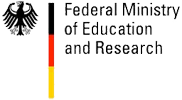Niessner, Matthias
Researcher Matthias Niessner Semantics and Geometry Name of Research Group: Semantics and Geometry Personal Homepage: niessnerlab.org/members/matthias_niessner/profile.html Mentor Saarbrücken: Hans-Peter Seidel Mentor Stanford: Pat Hanrahan Research Mission: My research is devoted to the exciting area of automated content creation. That includes the generation of three-dimensional scene environments from the real-world for live and offline reconstruction scenarios. Beyond static geometry and material retrieval, there are even greater challenges such as interactive performance...
Read MoreLi, Yangyan
Researcher Li, Yangyan Semantic Reconstruction from Point Cloud Mentor Saarbrücken: Hans-Peter Seidel Mentor Stanford: Leo Guibas Research Mission: Point cloud data is a very important source for reconstructing the 3D geometry of underlying objects. Recent advances in 3D scanner technology opened the door to easy acquisition and access of point cloud data for the masses, where not only the geometry recovery, but also the semantic reconstruction, are critical for serving applications in various domains. We are interesting in semantic reconstruction from point cloud. We argue...
Read MoreHullin, Matthias
Researcher Matthias Hullin Computational Transient Imaging Name of Research Group: Computational Transient Imaging Mentor Saarbrücken: Hans-Peter Seidel Research Mission: A major challenge in computer vision stems from the fact that visual data is highly ambiguous: given any two-dimensional image, there are infinitely many possible hypotheses of real-world scenes that would explain what we see. For the most part, this ambiguity can be traced back to the very mechanism of image capture: every pixel value of our camera is an integral of the so-called plenoptic function over space...
Read MoreWuhrer, Stefanie
Researcher Stefanie Wuhrer Non-Rigid Shape Analysis Name of Research Group: Non-Rigid Shape Analysis Personal Homepage: morpheo.inrialpes.fr/~wuhrer/ Mentor Saarbrücken: Hans-Peter Seidel Research Mission: Shape analysis aims to describe either a single shape or a population of shapes in an efficient and informative way. This is a key problem in various applications, such as mesh deformation and animation, object recognition, and mesh parameterization. In order to analyze a population of shapes, intrinsic correspondence information between the shapes is required. This group’s work...
Read MoreHildebrandt, Klaus
Researcher Klaus Hildebrandt Applies Geometry Mentor Saarbrücken: Hans-Peter Seidel Research Mission: Advances in scanning and sensing technologies within the last decade have enabled the creation of complex digital models from real-world objects. The field of geometry processing concerns the representation, analysis, manipulation, and optimization of the resulting geometric data. The findings in this field are of importance for many industrial applications, for example in the automotive industry and architecture. Fundamental to geometry processing is an understanding of geometric...
Read MoreAngst, Roland
Researcher Roland Angst Vision, Geometry, and Computational Perception Name of Research Group: Vision, Geometry, and Computational Perception Personal Homepage: rangst.github.io/#/home Mentor Saarbrücken: Hans-Peter Seidel Mentor Stanford: Bernd Girod and Leonidas Guibas Research Mission: Teaching a machine what it ‘sees’ has been a long-standing goal in computer vision which is not surprising since such 3D scene understanding algorithms would have a tremendous value for applications. For example, robots (including vehicles such as cars) could interact autonomously and...
Read More


